1.
Introduction
Since Kováčik and Rákosník established the theory of variable-exponent function spaces in [1], the subject has attracted extensive attention by many scholars. The theory of the variable-exponent Lebesgue spaces Lp(⋅)(Rn) has been extensively investigated, see [2,3,4,5]. Izuki first introduced the variable-exponent Herz spaces ˙Kα,qp(⋅)(Rn) [6] and considered the boundedness of commutators of fractional integrals in these spaces; for more research about the boundedness of operators in the above spaces, see [7,8]. Subsequently, Izuki generalized the Herz-Morrey spaces M˙Kα,λq,p(Rn) in [9] into the variable-exponent Herz-Morrey spaces M˙Kα,λq,p(⋅)(Rn) [10], for more research about M˙Kα,λq,p(⋅)(Rn), see [11,12,13]. On the other hand, the Muckenhoupt weight theory is a powerful tool in harmonic analysis, [14,15,16,17]. By using the basics on Banach function spaces and the variable-exponent Muckenhoupt theory, Izuki and Noi developed the theory of weighted variable-exponent Herz spaces ˙Kα,qp(⋅)(ω) [18,19,20]. After that, the research for the boundedness of some operators, such as the commutator of bilinear Hardy operators, commutators of fractional integral operators, and fractional Hardy operators achieved good results on weighted variable Herz-Morrey spaces M˙Kα,λq,p(⋅)(ω); for more details, see [21,22,23,24,25,26]. Consequently, many scholars have contributed to the study of function spaces and related differential equations, [27,28].
Motivated by the mentioned works, the main goal of this paper is to establish the boundedness of higher-order commutators Imβ,b generated by the fractional integral operator with BMO functions on grand weighted variable-exponent Herz-Morrey spaces M˙Kα,r),θλ,p(⋅)(ω) and to establish boundedness of the m−order multilinear fractional Hardy operator Hβ,m and its adjoint operator H∗β,m on weighted variable-exponent Herz-Morrey spaces M˙Kα,λq,p(⋅)(ω). The paper is organized as follows: In Section 2, we collect some preliminary definitions and lemmas. Our main results and their proof will be given in Section 3 and Section 4.
Now, let us recall some notations that will be used in this paper.
In [29], Hardy defined the classical Hardy operator as follows:
In [30], Christ and Grafakos defined the n−dimensional Hardy operator as follows:
and established the boundedness of H(f)(x) in Lp(Rn), obtaining the best constants.
In [31], under the condition of 0≤β<n and |x|=√∑ni=1x2i, Fu et al. defined the n−dimensional fractional Hardy operator and its adjoint operator as follows:
and established the boundedness of their commutators in Lebesgue spaces and homogeneous Herz spaces.
Let m and n be positive integers with m≥1, n≥2, and 0≤β<mn, and let L1loc(Rn) be the collection of all locally integrable functions on Rn. Wu and Zhang in [12] defined the m−order multilinear fractional Hardy operator and its adjoint operator as follows:
where x∈Rn∖{0}, |(t1,t2,⋯tm)|=√t21+t22+⋯+t2m. →f=(f1,f2,⋯,fm) is a vector-valued function, where fi(i=1,2,⋯,m)∈L1loc(Rn).
Obviously, when m=1, Hβ,m=Hβ, H∗β,m=H∗β. When β=0, Hm indicates a multilinear operator H0,m corresponding to the Hardy operator H, and H∗m indicates a multilinear operator H∗0,m corresponding to the adjoint operator H∗:=H∗0.
Let L1loc(Rn) be the collection of all locally integrable functions on Rn, and given a function b∈L1loc(Rn), the bounded mean oscillation (BMO) space and the BMO norm are defined, respectively, as follows:
where the supremum is taken over all the balls B∈Rn and bB=|B|−1∫Bb(y)dy.
Let b∈BMO(Rn), 0<β<n, and the fractional integral operator Iβ and the commutator of fractional integral operator [b,Iβ]f(x) are defined, respectively, as follows:
Let b∈BMO(Rn), 0<β<n, and m∈N. The higher-order commutator of fractional integrals operator Imβ,b is defined as follows:
Obviously, when m=1, I1β,b(f)(x)=[b,Iβ]f(x); and when m=0, I0β,b(f)(x)=Iβ(f)(x).
For 0≤β<n and f∈L1loc(Rn), the fractional maximal operator Mβ is defined as follows:
Where the supremum is taken over all balls B⊂Rn containing x. When β=0, we simply write M instead of M0, which is exactly the Hardy-Littlewood maximal function.
Throughout this paper, we use the following symbols and notations:
1. For a constant R>0 and a point x∈Rn, we write B(x,R):={y∈Rn:|x−y|<R}.
2. For any measurable set E⊂Rn, |E| denotes the Lebesgue measure and χE means the characteristic function.
3. Given k∈Z, we write Bk:=¯B(0,2k)={x∈Rn:|x|≤2k}.
4. We define a family {Ck}∞k=−∞ by Ck:=Bk∖Bk−1={x∈Rn:2k−1<|x|≤2k}. Moreover χk denotes the characteristic function of Ck, namely, χk:=χCk.
5. For any index 1<p(x)<∞, p′(x) is denoted by its conjugate index, namely, 1p(x)+1p′(x)=1.
6. If there exists a positive constant C independent of the main parameters such that A≤CB, then we write A≲B. Additionally A≈B means that both A≲B and B≲A hold.
2.
Preliminaries
In this section, we first recall some definitions related to the variable Lebesgue space and variable Muckenhoupt weight theory. On this basis, we review some definitions of weighted variable-exponent Lebesgue spaces, weighted variable-exponent Herz-Morrey spaces, and grand weighted variable-exponent Herz-Morrey spaces. In addition, we recall some definitions of Banach function space and weighted Banach function space. Then, we present several relevant lemmas that will aid in the proof of our main boundedness result.
2.1. Some definitions that will be used in this paper
Definition 2.1 (see [2]) Let p(⋅):Rn→[1,∞) be a real-valued measurable function.
(i) The Lebesgue space with variable-exponent Lp(⋅)(Rn) is defined by
(ii) The spaces with variable-exponent Lp(⋅)loc(E) are defined by
The variable-exponent Lebesgue space Lp(⋅)(Rn) is a Banach space with the norm defined by
Definition 2.2 (see [2]) (i) The set P0(Rn) consists of all measurable functions p(⋅):Rn→(0,∞) satisfying
where
(ii) The set P(Rn) consists of all measurable functions p(⋅):Rn→[1,∞) satisfying
where
(iii) The set B(Rn) consists of all measurable functions p(⋅)∈P(Rn) satisfying that the Hardy-Littlewood maximal operator M is bounded on Lp(⋅)(Rn).
Definition 2.3 (see [2]) Suppose that p(⋅) is a real-valued function on Rn. We say that
(i)Clogloc(Rn) is the set of all local log-Hölder continuous functions p(⋅) satisfying
(ii)Clog0(Rn) is the set of all local log-Hölder continuous functions p(⋅) satisfying at origin
(iii)Clog∞(Rn) is the set of all local log-Hölder continuous functions satisfying at infinity
(iv)Clog(Rn)=Clog∞(Rn)∩Clogloc(Rn) denotes the set of all global log-Hölder continuous functions p(⋅).
In [2], the author proved that if p(⋅)∈Clog(Rn), then p′(⋅)∈Clog(Rn), and also proved that if p(⋅)∈P(Rn)∩Clog(Rn), then the Hardy-Littlewood maximal operator M is bounded on Lp(⋅)(Rn).
Definition 2.4 (see [17]) (i) Given a non-negative, measure function ω, for 1<p<∞, ω∈Ap if
where the supremum is taken over all balls B⊂Rn.
(ii) A weight ω is called a Muckenhoupt weight A1 if
(iii) A weight ω is called a Muckenhoupt weight A∞ if
Note that these weights characterize the weighted norm inequalities for the Hardy-Littlewood maximal operator, that is, ω∈Ap, 1<p<∞, if and only if M:Lp(ω)→Lp(ω).
Definition 2.5 (see [18]) Suppose that p(⋅)∈P(Rn), a weight ω is in the class Ap(⋅) if
Obviously, if p(⋅)=p,1<p<∞, then the above definition reduces to the classical Muckenhoupt Ap class. In [18], suppose p(⋅),q(⋅)∈P(Rn) and p(⋅)≤q(⋅), then A1⊂Ap(⋅)⊂Aq(⋅).
Definition 2.6 (see [18]) Let 0<β<n and p1(⋅),p2(⋅)∈P(Rn) such that 1p2(x)=1p1(x)−βn. A weighted ω is said to be an A(p1(⋅),p2(⋅)) weight, then for all balls B⊂Rn satisfying
In [14], suppose p1(⋅),p2(⋅)∈P(Rn) and β∈(0,n) such that 1p2(x)=1p1(x)−βn. Then ω∈A(p1(⋅),p2(⋅)) if and only if ωp2(⋅)∈A1+p2(⋅)p′1(⋅).
Definition 2.7 (see [25]) Let p(⋅)∈P(Rn) and ω∈Ap(⋅), the weighted variable-exponent Lebesgue space Lp(⋅)(ω) denotes the set of all complex-valued measurable functions f satisfying
This is a Banach space equipped with the norm:
Definition 2.8 (see [25]) Let α∈R,0<q<∞, p(⋅)∈P(Rn) and 0≤λ<∞. The homogeneous weighted variable-exponent Herz-Morrey spaces M˙Kα,λq,p(⋅)(ω) are defined by
where
Nonhomogeneous weighted variable-exponent Herz-Morrey spaces can be defined in a similar way. For more details, see [25]. When λ=0, the weighted variable-exponent Herz-Morrey spaces become weighted variable-exponent Herz spaces, see [18].
Definition 2.9 (see [32]) Let p(⋅)∈P(Rn),α∈R,θ>0,0<r<∞,0≤λ<∞. The homogeneous grand weighted variable-exponent Herz-Morrey spaces M˙Kα,r),θλ,p(⋅)(ω) are the collection of Lp(⋅)loc(Rn∖{0},ω) such that
where
Nonhomogeneous grand weighted variable-exponent Herz-Morrey spaces can be defined in a similar way. For more details, see [32]. When λ=0, the grand weighted variable-exponent Herz-Morrey spaces become grand weighted variable-exponent Herz spaces, see [33].
Definition 2.10 (see [18]) Let M be the set of all complex-valued measurable functions defined on Rn, and X a linear subspace of M.
1. The space X is said to be a Banach function space if there exists a function ‖⋅‖X:M→[0,∞] satisfying the following properties: Let f,g,fj∈M(j=1,2,…), then
(a) f∈X holds if and only if ‖f‖X<∞.
(b) Norm property:
i. Positivity: ‖f‖X≥0.
ii. Strict positivity: ‖f‖X=0 holds if and only if f(x)=0 for almost every x∈Rn.
iii. Homogeneity: ‖λf‖X=|λ|⋅‖f‖X holds for all λ∈C.
iv. Triangle inequality: ‖f+g‖X≤‖f‖X+‖g‖X.
(c) Symmetry: ‖f‖X=‖|f|‖X.
(d) Lattice property: If 0≤g(x)≤f(x) for almost every x∈Rn, then ‖g‖X≤‖f‖X.
(e) Fatou property: If 0≤fj(x)≤fj+1(x) for all j and fj(x)→f(x) as j→∞ for almost every x∈Rn, then limj→∞‖fj‖X=‖f‖X.
(f) For every measurable set F⊂Rn such that |F|<∞, ‖χF‖X is finite. Additionally, there exists a constant CF>0 depending only on F so that ∫F|h(x)|dx≤CF‖h‖X holds for all h∈X.
2. Suppose that X is a Banach function space equipped with a norm ‖⋅‖X. The associated space X′ is defined by
where
Definition 2.11 Let(see [18]) Let X be a Banach function spaces. The set Xloc(Rn) consists of all measurable functions f such that fχE∈X for any compact set E with |E|<∞. Given a function W such that 0<W(x)<∞ for almost every x∈(Rn), W∈Xloc(Rn) and W−1∈(X′)loc(Rn), the weighted Banach function space is defined by
2.2. Some lemmas that will be used in this paper
Lemma 2.1 (see [34]) Let X be a Banach function space, then we have
(i) The associated space X′ is also a Banach function spaces.
(ii)‖⋅‖(X′)′ and ‖⋅‖X are equivalent.
(iii) If g∈X and f∈X′, then
is the generalized Hölder inequality.
Lemma 2.2 (see [34]) If X is a Banach function space, then we have, for all balls B,
Lemma 2.3 (see [16]) Let X be a Banach function space. Suppose that the Hardy-Littlewood maximal operator M is weakly bounded on X, that is,
is true for all f∈X and all λ>0. Then, we have
Lemma 2.4 (see [18]) (i) The weighted Banach function space X(Rn,W) is a Banach function space equipped by the norm
(ii) The associate space of X(Rn,W) is a Banach function space and equals X′(Rn,W−1).
Remark 2.5 (see [21]) Let p(⋅)∈P(Rn) and by comparing the Lp(⋅)(ωp(⋅)) and Lp′(⋅)(ω−p′(⋅)) with the definition of X(Rn,W), we have
1. If we take W=ω and X=Lp(⋅)(Rn), then we get Lp(⋅)(Rn,ω)=Lp(⋅)(ωp(⋅)).
2. If we consider W=ω−1 and X=Lp′(⋅)(Rn), then we get Lp′(⋅)(Rn,ω−1)=Lp′(⋅)(ω−p′(⋅)). By virtue of Lemma 2.4, we get
Lemma 2.6 (see [18]) Let X be a Banach function space. Suppose that M is bounded on the associate space X′. Then there exists a constant 0<δ<1 such that for all balls B⊂Rn and all measurable sets E⊂B,
The paper [1] shows that Lp(⋅)(Rn) is a Banach function space and the associated space Lp′(⋅)(Rn) has equivalent norm.
Lemma 2.7 (see [20]) Let p(⋅)∈P(Rn)∩Clog(Rn) and ω∈Ap(⋅), then there are constants δ1,δ2∈(0,1) and C>0 such that for all k,l∈Z with k≤l,
and
Lemma 2.8 (see [35] Theorem 3.12) Let p1(⋅)∈P(Rn)∩LH(Rn) and 0<β<np+1. Define p2(⋅) by 1p1(⋅)−1p2(⋅)=βn. If ω∈A(p1(⋅),p2(⋅)), then Iβ is bounded from Lp1(⋅)(ωp1(⋅)) to Lp2(⋅)(ωp2(⋅)).
Lemma 2.9 (see [35] Theorem 3.14) Suppose that b∈BMO(Rn) and m∈N. Let p1(⋅)∈P(Rn)∩Clog(Rn) and 0<β<np+1. Define p2(⋅) by 1p1(⋅)−1p2(⋅)=βn. If ω∈A(p1(⋅),p2(⋅)), then
Lemma 2.10 (see [36] Theorem 2.3) Let p(⋅),p1(⋅),p2(⋅)∈P0(Rn) such that 1p(x)=1p1(x)+1p2(x) for x∈Rn. Then, there exists a constant Cp,p1 independent of functions f and g such that
holds for every f∈Lp1(⋅)(Rn) and g∈Lp2(⋅)(Rn).
Lemma 2.11 (see [23] Corollary 3.11) Let b∈BMO(Rn),m∈N, and k,j∈Z with k>j. Then we have
and
3.
Higher-order commutators of fractional integrals operator
In this section, under certain hypothetical conditions, we first establish the boundedness of higher-order commutators Imβ,b generated by the fractional integrals operator with BMO functions on weighted variable-exponent Herz-Morrey spaces M˙Kα,λq,p(⋅)(ω). Then, we establish the boundedness of Imβ,b on grand weighted variable-exponent Herz-Morrey spaces M˙Kα,r),θλ,p(⋅)(ω).
Theorem 3.1 Suppose that b∈BMO(Rn) and m∈N. Let 0<λ<∞, 0<q1≤q2<∞, p2(⋅)∈P(Rn)∩Clog(Rn), ωp2(⋅)∈A1, δ1,δ2∈(0,1) are the constants appearing in (2.17) and (2.18) respectively. α and β are such that
(i)−nδ1+λ<α<nδ2−β+λ
(ii)0<β<n(δ1+δ2).
Define p1(⋅) by 1p2(⋅)=1p1(⋅)−βn, then Imβ,b are bounded from M˙Kα,λq2,p2(⋅)(ωp2(⋅)) to M˙Kα,λq1,p1(⋅)(ωp1(⋅)).
Proof We prove the homogeneous case while the nonhomogeneous case is similar. For all f∈M˙Kα,λq2,p2(⋅)(ωp2(⋅))(Rn) and ∀b∈BMO(Rn), if we denote fj:=fχj=fχCj for each j∈Z, then f=∑∞j=−∞fj. So we can write
Because of 0<q1q2≤1, then the Jensen inequality follows that
By virtue of (3.1), we obtain
First we estimate J1. Note that if x∈Ck, y∈Cj, and j≤k−2, then |x−y|≈|x|≈2k. By Cp inequality and generalized Hölder inequality, for every j,k∈Z, we get
By taking the Lp2(⋅)(ωp2(⋅))−norm for (3.2), by Lemma 2.11, we have
By virtue of Lemma 2.6, we have
Note that χBj(x)≲2−jβIβ(χBj) (see [11] p.350), by applying (2.15), (3.4), and Lemma 2.8, we obtain
By virtue of (2.14) and (2.15), combining (2.18) and (3.5), we have
Hence by virtue of (3.3) and (3.6), we have
On the other hand, note the following fact:
Thus, by virtue of (3.7) and (3.8), remark that α<nδ2−β+λ,
Next, we estimate J2. Using Lemma 2.9, we get
Finally, we estimate J3. Note that if x∈Ck, y∈Cj, and j≥k+2, then |x−y|≈|x|≈2j. By the Cp inequality and generalized Hölder inequality, for every j,k∈Z, we get
Thus, by taking the Lp2(⋅)(ωp2(⋅))−norm for (3.9), by virtue of Lemma 2.11, we have
On the other hand, by (2.14) and (2.15), combining (2.17) and (3.5), we have
Hence, combining (3.10) and (3.11), we obtain
Thus, by virtue of (3.9) and (3.12), remark that λ−nδ1<α, and we conclude that
Combining the estimates of J1,J2,J3, we complete the proof of Theorem 3.1.
Theorem 3.2 Suppose that b∈BMO(Rn) and m∈N. Let 0≤λ<∞, 1<r<∞, p2(⋅)∈P(Rn)∩Clog(Rn), \omega^{p_{2}}(\cdot)\in A_{1} , \delta_{1}, \delta_{2}\in(0, 1) be the constants appearing in (2.17) and (2.18) respectively. \alpha and \beta are such that
(i) \; -n\delta_{1} < \alpha < n\delta_{2}-\beta
(ii) \; 0 < \beta < n(\delta_{1}+\delta_{2}) .
Define p_{1}(\cdot) by \frac{1}{p_{2}(\cdot)} = \frac{1}{p_{1}(\cdot)}-\frac{\beta}{n} , then I_{\beta, b}^{m} is bounded from \mathrm{M\dot{K}}_{\lambda, p_{2}(\cdot)}^{\alpha, r), \theta}(\omega^{p_{2}(\cdot)}) to \mathrm{M\dot{K}}_{\lambda, p_{1}(\cdot)}^{\alpha, r), \theta}(\omega^{p_{1}(\cdot)}) .
\textbf{Proof}\quad We prove the homogeneous case, as the nonhomogeneous case is similar. For all f\in \mathrm{M\dot{K}}_{\lambda, p_{2}(\cdot)}^{\alpha, r), \theta}(\omega^{p_{2}(\cdot)}) and \forall b\in \mathrm{BMO}(\mathbb{R}^{n}) , if we denote f_{j}: = f\chi_{j} = f\chi_{C_{j}} for each j\in \mathbb{Z} , then f = \sum_{j = -\infty}^{\infty}f_{j} . So we can write
Then we have
First, we estimate \mathcal{J}_{1} . Remark that \alpha < n\delta_{2}-\beta , thus we consider two cases: 1 < r(1+\delta) < \infty and 0 < r(1+\delta)\leq1 . For the case 1 < r(1+\delta) < \infty , by applying (3.7) and Hölder inequality, we have
For 0 < r(1+\delta)\leq1 , by virtue of (3.7), we have
Next, we estimate \mathcal{J}_{2} . Using Lemma 2.9, we get
Finally, we estimate \mathcal{J}_{3} . By virtue of (3.12), we have
Remark that \alpha+n\delta_{1} > 0 , thus we consider two cases 1 < r(1+\delta) < \infty and 0 < r(1+\delta)\leq1 . For the case 1 < r(1+\delta) < \infty , by applying Hölder inequality, we have
For 0 < r(1+\delta)\leq1 , we have
Combining the estimates of \mathcal{J}_{1}, \mathcal{J}_{2}, \mathcal{J}_{3} , we complete the proof of Theorem 3.2.
\textbf{Remark 3.3}\; \quad When \lambda = 0 and m = 0 , Theorem 3.1 holds on weighted variable-exponent Herz spaces and generalizes the result of Izuki in [18] (see Theorem 4). When 0 < \lambda < n and m = 1 , Theorem 3.1 has been proved by Zhao in [26] (see Theorem 2.2). When m = 0 , Theorem 3.2 holds on grand weighted variable-exponent Herz-Morrey spaces, and generalizes the result of Sultan in [32] (see Theorem 2).
4.
Multilinear fractional Hardy-type operators
In this section, under some assumed conditions, we first establish the boundedness of the m- order multilinear fractional Hardy operator \mathcal{H}_{\beta, m} on weighted variable exponent Herz-Morrey spaces \mathrm{M\dot{K}}_{q, p(\cdot)}^{\alpha, \lambda}(\omega) . Then, we establish the boundedness of the adjoint operator of the m- order multilinear fractional Hardy operator \mathcal{H}^{\ast}_{\beta, m} on weighted variable-exponent Herz-Morrey spaces \mathrm{M\dot{K}}_{q, p(\cdot)}^{\alpha, \lambda}(\omega) . As a corollary of the above two results, we also obtain the corresponding result for multilinear Hardy operator \mathcal{H}_{m} and its adjoint operator \mathcal{H}^{\ast}_{m} .
\textbf{Theorem 4.1}\; \quad Let p_{i}(\cdot)\in\mathcal{P}(\mathbb{R}^{n})\cap \mathcal{C}^{\mathrm{log}}(\mathbb{R}^{n})(i = 1, 2, \cdots, m, m\in \mathbb{Z^{+}}) , p(\cdot) is defined as follows:
Let 0 < \beta < \frac{mn}{\max\limits_{1\leq i\leq m}(p_{i})^{+}} , 0 < q_{i} < \infty , \lambda_{i} > 0 , \frac{1}{q} = \sum_{i = 1}^{m}\frac{1}{q_{i}}-\frac{\beta}{n} , \lambda = \sum_{i = 1}^{m}\lambda_{i} , \alpha = \sum_{i = 1}^{m}\alpha_{i} , \omega\in A_{p(\cdot)} , \omega_{i}\in A_{p_{i}(\cdot)} , \omega = \prod_{i = 1}^{m}\omega_{i} , \alpha_{i} < \lambda_{i}+n\delta_{i2} , where \delta_{i2}\in(0, 1) are the constants in (2.18) for exponents p_{i}(\cdot) and weights \omega_{i}^{p_{i}(\cdot)} , then
\textbf{Proof}\; \quad We prove the homogeneous case, since the nonhomogeneous case is similar. Without loss of generality, we only consider the case m = 2 . Actually, a similar procedure works for all m\in \mathbb{Z^{+}}(m\geq 1) . When m = 2 , then we have
For arbitrary f_{i}\in \mathrm{M\dot{K}}_{q_{i}, p_{i}(\cdot)}^{\alpha_{i}, \lambda_{i}}(\omega_{i}^{p_{i}(\cdot)})(i = 1, 2) , let f_{k_{i}}: = f_{i}\cdot\chi_{k_{i}} = f_{i}\cdot\chi_{C_{k_{i}}} , then
By virtue of the definition of \mathcal{H}_{\beta, 2} and generalized Hölder inequality (2.13), we have
Note that if u(\cdot), p_{1}(\cdot), p_{2}(\cdot)\in \mathcal{P}(\mathbb{R}^{n}) such that \frac{1}{u(x)} = \frac{1}{p_{1}(x)}+\frac{1}{p_{2}(x)} for x\in \mathbb{R}^{n} , and \omega\in A_{u(\cdot)} with \omega_{i}\in A_{p_{i}(\cdot)} , \omega = \prod_{i = 1}^{2}\omega_{i} , by (2.19) of Lemma 2.10, we have
By virtue of (2.16) of Lemma 2.6, we have
Let \frac{1}{u(x)} = \frac{1}{p_{1}(x)}+\frac{1}{p_{2}(x)} , then by the condition of Theorem 4.1, it implies that \frac{\beta}{n} = \frac{1}{u(x)}-\frac{1}{p(x)} . Note that \chi_{B_{k}}\leq C2^{-k\beta}I_{\beta}(\chi_{B_{k}})(x) (see [11] p.350), by virtue of (2.15), (4.2), (4.3), and Lemma 2.8, we have
Remark that k_{1}\leq k, k_{2}\leq k . By applying (2.18) and (4.4), we have
Thus, by taking the L^{p(\cdot)}(\omega^{p(\cdot)})- norm for (4.1), and by virtue of (4.5), we have
Let 0 < \gamma\leq 1 , then by the Jensen inequality it follows that
Let \frac{1}{v} = \frac{1}{q_{1}}+\frac{1}{q_{2}} , then \frac{1}{q} = \frac{1}{v}-\frac{\beta}{n} , therefore q > v . By applying (4.6), (4.7), and Hölder inequality in sequential form, we have
on the other hand, note the following fact:
Remark that \alpha_{i} < \lambda_{i}+n\delta_{i2} . By applying (4.7), (4.8), and (4.9), we have
This finishes the proof of Theorem 4.1.
\textbf{Theorem 4.2}\; \quad Let p_{i}(\cdot)\in\mathcal{P}(\mathbb{R}^{n})\cap \mathcal{C}^{\mathrm{log}}(\mathbb{R}^{n})(i = 1, 2, \cdots, m, m\in \mathbb{Z^{+}}) , p(\cdot) is defined as follows:
Let 0 < \beta < \frac{mn}{\max\limits_{1\leq i\leq m}(p_{i})^{+}} , 0 < q_{i} < \infty , \lambda_{i} > 0 , \frac{1}{q} = \sum_{i = 1}^{m}\frac{1}{q_{i}}-\frac{\beta}{n} , \lambda = \sum_{i = 1}^{m}\lambda_{i} , \alpha = \sum_{i = 1}^{m}\alpha_{i} , \omega\in A_{p(\cdot)} , \omega_{i}\in A_{p_{i}(\cdot)} , \omega = \prod_{i = 1}^{m}\omega_{i} , \alpha_{i} > \lambda_{i}+\frac{\beta}{m}-n\delta_{i1} , where \delta_{i1}\in(0, 1) are the constants in (2.17) for exponents p_{i}(\cdot) and weights \omega_{i}^{p_{i}(\cdot)} , then
\textbf{Proof}\; \quad We prove the homogeneous case, since the nonhomogeneous case is similar. Without loss of generality, we only consider the case m = 2 . Actually, a similar procedure works for all m\in \mathbb{Z^{+}}(m\geq 1) . When m = 2 , then we have
For arbitrary f_{i}\in \mathrm{M\dot{K}}_{q_{i}, p_{i}(\cdot)}^{\alpha_{i}, \lambda_{i}}(\omega_{i}^{p_{i}(\cdot)})(i = 1, 2) , let f_{k_{i}}: = f_{i}\cdot\chi_{k_{i}} = f_{i}\cdot\chi_{C_{k_{i}}} , then
Note that |t_{1}|^{n-\frac{\beta}{2}}|t_{2}|^{n-\frac{\beta}{2}} < |(t_{1}, t_{2})|^{2n-\beta} (see [37] p.11). By virtue of the definition of \mathcal{H}_{\beta, 2}^{\ast} and generalized Hölder inequality, we have
Remark that k_{1}\geq k, k_{2}\geq k . By applying (2.14), (2.17), and (4.4), we have
Thus, by taking the L^{p(\cdot)}(\omega^{p(\cdot)})- norm for (4.10), and by virtue of (4.11), we have
Let \frac{1}{v} = \frac{1}{q_{1}}+\frac{1}{q_{2}} , then \frac{1}{q} = \frac{1}{v}-\frac{\beta}{n} ; therefore, q > v . By applying (4.7), (4.12), and Hölder inequality in sequential form, we have
Remark that \alpha_{i} > \lambda_{i}+\frac{\beta}{2}-n\delta_{i1} . By applying (4.7), (4.9), and (4.13), we have
This finishes the proof of Theorem 4.2.
\textbf{Theorem 4.3}\; \quad Let p_{i}(\cdot)\in\mathcal{P}(\mathbb{R}^{n})\cap \mathcal{C}^{\mathrm{log}}(\mathbb{R}^{n})(i = 1, 2, \cdots, m, m\in \mathbb{Z^{+}}) , p(\cdot) is defined as follows:
Let 0 < q_{i} < \infty , \lambda_{i} > 0 , \frac{1}{q} = \sum_{i = 1}^{m}\frac{1}{q_{i}} , \lambda = \sum_{i = 1}^{m}\lambda_{i} , \omega\in A_{p(\cdot)} , \omega_{i}\in A_{p_{i}(\cdot)} , \omega = \prod_{i = 1}^{m}\omega_{i} , \delta_{i1}, \delta_{i2}\in(0, 1) are the constants in Lemma 2.7 for exponents p_{i}(\cdot) and weights \omega_{i}^{p_{i}(\cdot)} , then
(i) When \alpha_{i} < \lambda_{i}+n\delta_{i2} , we have
(ii) When \alpha_{i} > \lambda_{i}-n\delta_{i1} , we have
\textbf{Proof}\; \quad \; (i) We prove the homogeneous case, since the nonhomogeneous case is similar. Since the proof method is similar to the Theorem 4.1, we only give the proof idea here and omit the detailed proof. Without loss of generality, we only consider the case m = 2 . Actually, a similar procedure works for all m\in \mathbb{Z^{+}}(m\geq 1) . When m = 2 , similar to the estimation of (4.1), by virtue of the definition of \mathcal{H}_{2} and generalized Hölder inequality, we have
By taking the L^{p(\cdot)}(\omega^{p(\cdot)})- norm for (4.14) and applying (2.18) and (4.4), we have
Next, the required results are obtained in a way similar to the proof of Theorem 4.1.
(ii) We prove the homogeneous case, since the nonhomogeneous case is similar. Since the proof method is similar to the Theorem 4.2, we only give the proof idea here and omit the detailed proof. Without loss of generality, we only consider the case m = 2 . Actually, a similar procedure works for all m\in \mathbb{Z^{+}}(m\geq 1) . When m = 2 , similar to the estimation of (4.10), by virtue of the definition of \mathcal{H}^{\ast}_{2} and generalized Hölder inequality, we have
By taking the L^{p(\cdot)}(\omega^{p(\cdot)})- norm for (4.16), applying (2.14), (2.15), (2.17), and (4.4), we have
Similar to the estimation of (4.13). By applying (4.7), (4.17), and Hölder inequality in sequential form, we have
Remark that \alpha_{i} > \lambda_{i}-n\delta_{i1} . By applying (4.7), (4.9), and (4.18), we have
This finishes the proof idea of Theorem 4.3.
\textbf{Remark 4.4}\quad Because of \mathrm{M\dot{K}}_{q, p(\cdot)}^{\alpha, 0}(\omega) = \mathrm{\dot{K}}_{ p(\cdot)}^{\alpha, q}(\omega) , let \lambda = 0 from Theorem 4.1 and Theorem 4.2. Then we can obtain the boundedness of the m- order multilinear fractional Hardy operator \mathcal{H}_{\beta, m} and its adjoint operator \mathcal{H}^{\ast}_{\beta, m} from the weighted variable-exponent Herz product space
to the homogeneous weighted variable-exponent Herz space K_{p(\cdot)}^{\alpha, q}(\omega^{p(\cdot)}) . Obviously, from Theorem 4.3, the m- order multilinear Hardy operator \mathcal{H} and its adjoint operator \mathcal{H}^{\ast} have similar results.
5.
Conclusions
This paper first considered the boundedness of higher-order commutators I_{\beta, b}^{m} generated by the fractional integral operator with BMO functions on weighted variable-exponent Herz-Morrey spaces \mathrm{M\dot{K}}_{q, p(\cdot)}^{\alpha, \lambda}(\omega) and grand weighted variable-exponent Herz-Morrey spaces \mathrm{M\dot{K}}_{\lambda, p(\cdot)}^{\alpha, r), \theta}(\omega) , and generalized Theorem 4 of Izuki [18] as well as Theorem 2 of Sultan [32]. Then, we considered the boundedness of the m- order multilinear fractional Hardy operator \mathcal{H}_{\beta, m} and its adjoint operator \mathcal{H}^{\ast}_{\beta, m} on weighted variable-exponent Herz-Morrey spaces \mathrm{M\dot{K}}_{q, p(\cdot)}^{\alpha, \lambda}(\omega) , and generalized some relevant results of Wu [12].
Author contributions
Ming Liu and Binhua Feng wrote the main manuscript text and approved the final manuscript.
Use of AI tools declaration
The authors declare they have not used Artificial Intelligence (AI) tools in the creation of this article.
Acknowledgments
We wish to thank the handing editor and the referees for their valuable comments and suggestions. B. Feng is supported by the National Natural Science Foundation of China (No.12461035,12261079), the Natural Science Foundation of Gansu Province (No.24JRRA242).
Conflict of interest
The authors declare there is no conflict of interest.











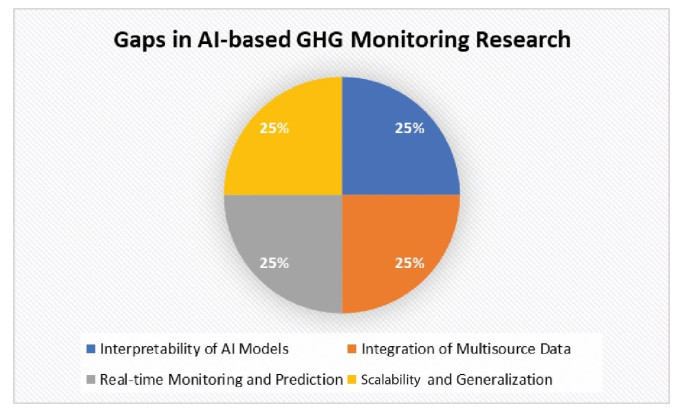
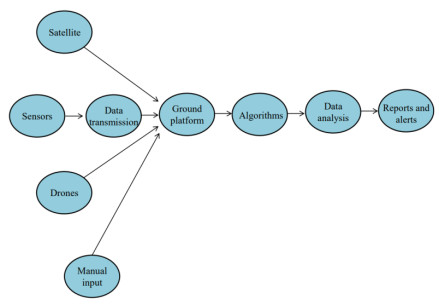
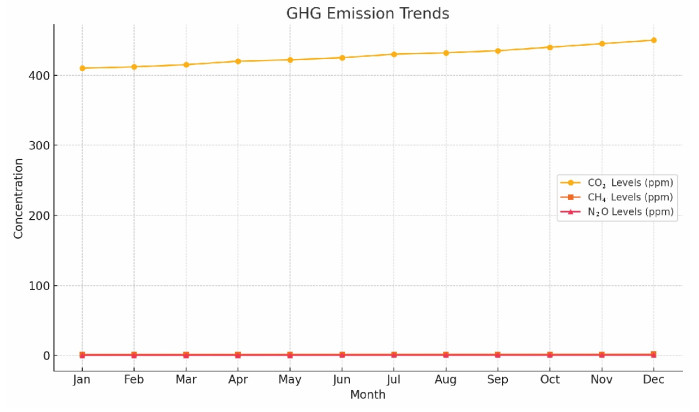

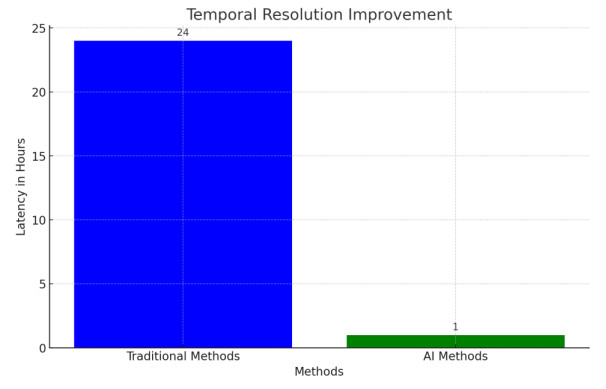
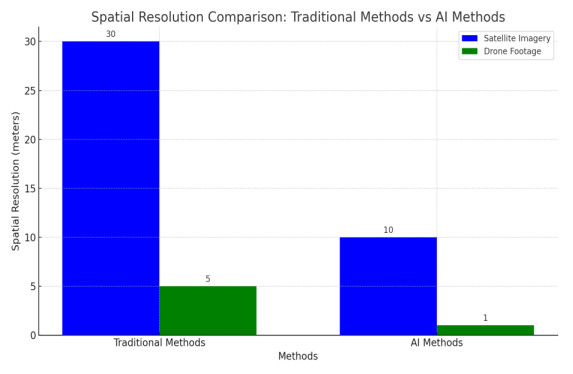
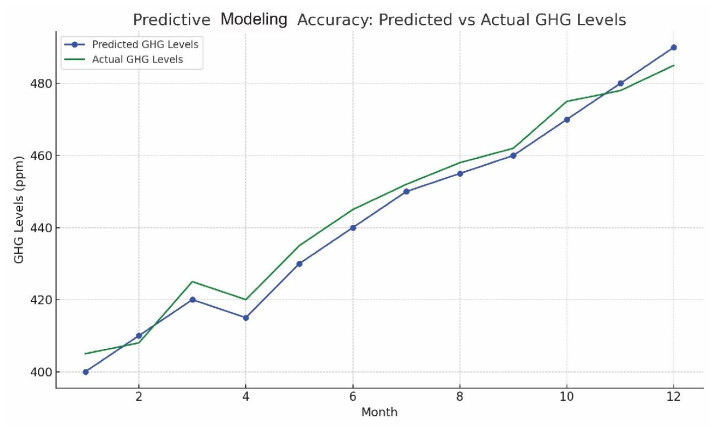
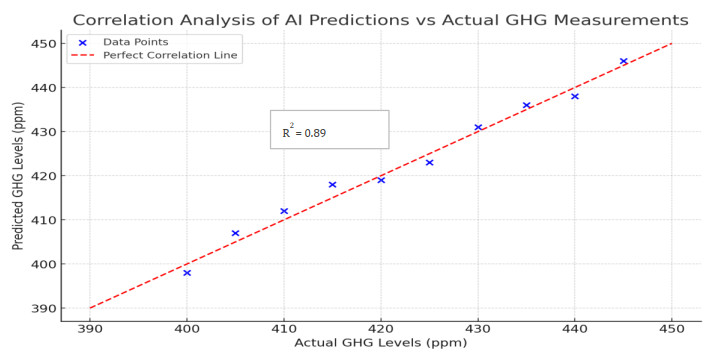


 DownLoad:
DownLoad: